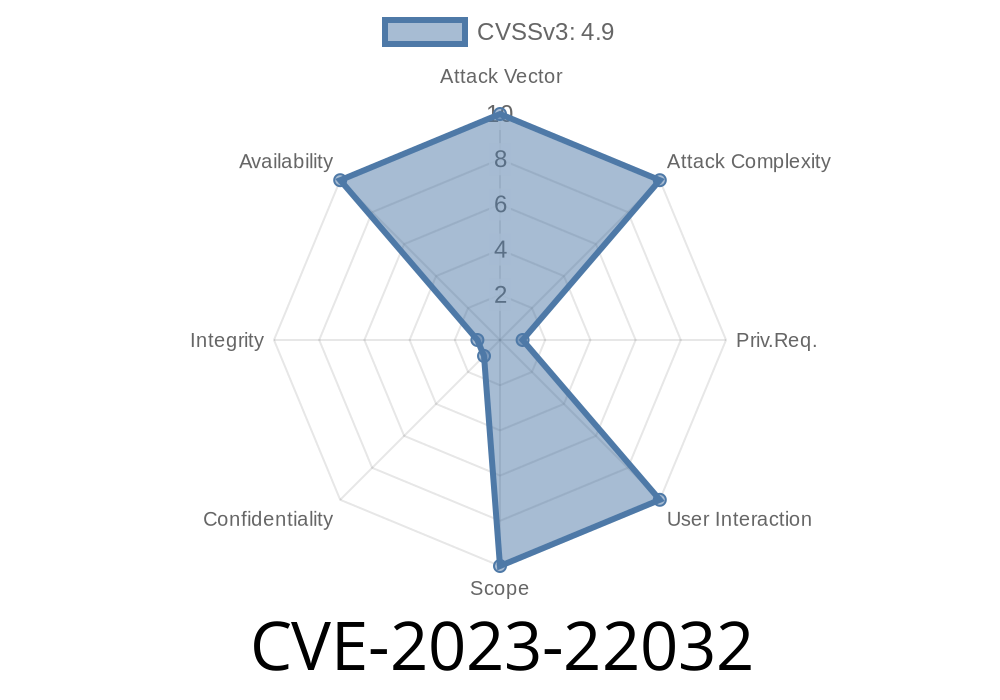As an open-source relational database management system, MySQL Server plays a critical role in storing and managing sensitive data for numerous applications. Recently, a vulnerability (CVE-2023-22032) has been discovered in MySQL Server, specifically in the Optimizer component. This vulnerability affects MySQL Server versions 8..34 and prior, as well as 8.1..
This blog post will examine the details of the vulnerability, including the exploit method, and provide links to the original references. We will also look at a code snippet that demonstrates the issue and discuss ways to mitigate the risk.
Vulnerability Overview
CVE-2023-22032 is a high-risk vulnerability that allows a high privileged attacker with network access via multiple protocols to compromise the MySQL Server. Successful exploitation of this vulnerability may result in the unauthorized ability to cause a hang or frequently repeatable crash (complete DoS) of the MySQL Server.
The Common Vulnerability Scoring System (CVSS) rates this vulnerability with a CVSS base score of 4.9, considering availability impacts. The CVSS vector for this vulnerability is (CVSS:3.1/AV:N/AC:L/PR:H/UI:N/S:U/C:N/I:N/A:H).
For more information about the CVE-2023-22032 vulnerability, visit
- Original CVE Details
- NIST NVD Details
Code Snippet
The following code snippet demonstrates the vulnerability within the MySQL Server Optimizer component:
CREATE TABLE test_table (col1 INT, col2 INT);
INSERT INTO test_table VALUES (1, 2);
SELECT * FROM test_table WHERE col1 = (SELECT col2 FROM test_table WHERE col1 = 1);
In this example, a SQL query is crafted in such a way that it triggers the MySQL Server Optimizer to crash or hang while processing the query. A successful attack using this type of query may lead to a complete DoS of the MySQL Server.
Exploit Details
To exploit this vulnerability, an attacker must have high privileges on a MySQL Server, as well as access to the network where the server is reachable. By crafting and executing malicious SQL queries leveraging the Optimizer component, the attacker can potentially crash or completely hang the target MySQL Server.
To mitigate the risks associated with this vulnerability, it is advised that
1. Update the MySQL Server to the latest version (8..35 or later) or apply the appropriate patches provided by Oracle.
2. Restrict access to the MySQL Server by implementing strict network access controls and allow only trusted users to connect.
3. Monitor the MySQL Server logs for any signs of suspicious activity or failed login attempts and take immediate action if necessary.
Conclusion
CVE-2023-22032 is a critical vulnerability in the MySQL Server Optimizer component that could enable a high privileged attacker to compromise the server and cause a complete DoS. It is crucial for system administrators and security professionals to take the necessary steps to mitigate the risks associated with this vulnerability and apply the recommended updates and patches.
By maintaining a strong security posture through software updates, network access control, and continuous monitoring, organizations can effectively reduce the likelihood of successful attacks against their MySQL Server installations.
Timeline
Published on: 10/17/2023 22:15:00 UTC
Last modified on: 10/19/2023 09:46:00 UTC
